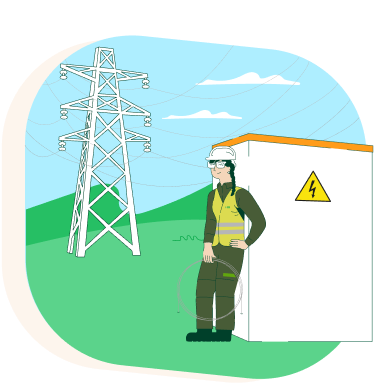
Substation: What it is, how it works, and main characteristics
Currently, electrical grids are the backbone of the energy system as they connect decentralized energy generation with the end consumer.
In this context, distribution substations allow for the transformation, regulation, and distribution of energy safely and efficiently. In this article, we explain what an electrical substation is, how it works, and its main components.
What is an electrical substation?
An electrical substation is a set of electrical equipment designed to manage the flow of energy at a point in the grid (node) where lines, transformers, and generators converge.
It is a key installation in the electrical distribution network, as it regulates the flow of energy and adjusts voltage levels. Strategically located, these infrastructures facilitate the transit of electricity from generation plants to consumption centers, ensuring efficient and safe distribution.
The term "substation" is used because these installations are subordinate to the main power generation station, receiving the generated energy and transforming it for distribution.
What is the function of a distribution electrical substation?
Its main mission is to transfer energy from generators, through the transmission network, to the distribution network, adjusting the electrical voltage to ensure its safe distribution to homes, businesses, and industries.
The key functions of an electrical substation are:
- Transformation: Adjusts high voltage levels to appropriate voltage levels for delivering energy to the end customer.
- Distribution: Manages the electrical flow, allowing for proper distribution of electrical energy.
- Protection: Controls the flow of energy through switches and other complementary equipment to protect the electrical system from overloads and/or short circuits.
- Monitoring: Controls and supervises the state of the electrical network components to ensure the quality of supply and that everything works safely and correctly.
What are the fundamental parts of an electrical substation?
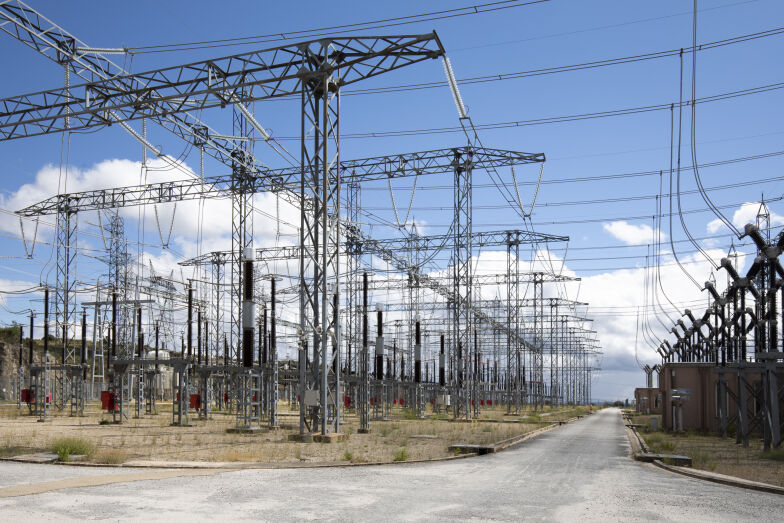
The components of an electrical substation are diverse, and each one fulfills a function to ensure the proper operation of the installation. The main parts that make up a substation include:
Busbars
- Collector busbars: Responsible for distributing electricity among different equipment, functioning as connection nodes that facilitate the interconnection of circuits.
Transformers
- Power transformers: Adjust the voltage level between generation, transmission, and distribution, optimizing energy transport over long distances.
- Measurement transformers: Measure electrical parameters such as voltage and current in high voltage, providing safe values for continuous system protection and control.
Power switches and disconnectors
- Power switches: Interrupt the electrical flow in fault situations or during maintenance tasks, protecting both the installation and the operators.
- Disconnectors: Allow isolating specific sections of the substation for maintenance or emergency situations, ensuring operational safety.
Measurement, Control, and Protection Equipment
- Control equipment: Allow maneuvering over the substation equipment and receive information about their status.
- Measurement equipment: Monitor the electrical parameters of the substation.
- Protection relays: Directed by measurement and control equipment, act on the substation equipment when anomalies such as overloads and/or short circuits are detected to interrupt the energy flow and thus avoid damage to equipment and people.
Connection and support systems
- Grounding system and lightning rods: Essential for diverting unwanted currents to the ground, reducing electrical risks, and protecting both personnel and equipment.
- Backup systems: Include batteries and uninterruptible power supplies that ensure the operability of critical equipment in emergencies.
- Cooling systems: Maintain the proper temperature of transformers and other components, preventing overheating and extending the equipment's lifespan.
Types of electrical substations
There are various classifications for electrical substations, which vary according to their function and design:
1. According to their function in the network
- Step-up substations: Interconnect generation and the transmission network. They increase the voltage to facilitate the transport of electrical energy over long distances, minimizing losses.
- Step-down substations: Interconnect the transmission network with the distribution network. They reduce the voltage to appropriate values for distributing energy to consumption centers.
- Step-up Transformer (ST): Voltage-transforming installation, with a higher transformation level of Very High Voltage (voltage level equal to or greater than 132kV).
- Distribution Transformer Substations (STR): Voltage-transforming installation, with a higher voltage level of High/Medium (voltage level less than 132kV).
2. According to design
- Conventional (open): Installed outdoors and require more space, generally installed in areas with lower population density.
- Compact (closed): Designed for urban environments where space is limited, integrating all components in a single enclosure.
- Underground: Placed underground to minimize surface space occupation, ideal for densely populated urban centers. These substations provide all the functionality of a conventional substation while reducing visual impact and noise.
Safety in electrical substations
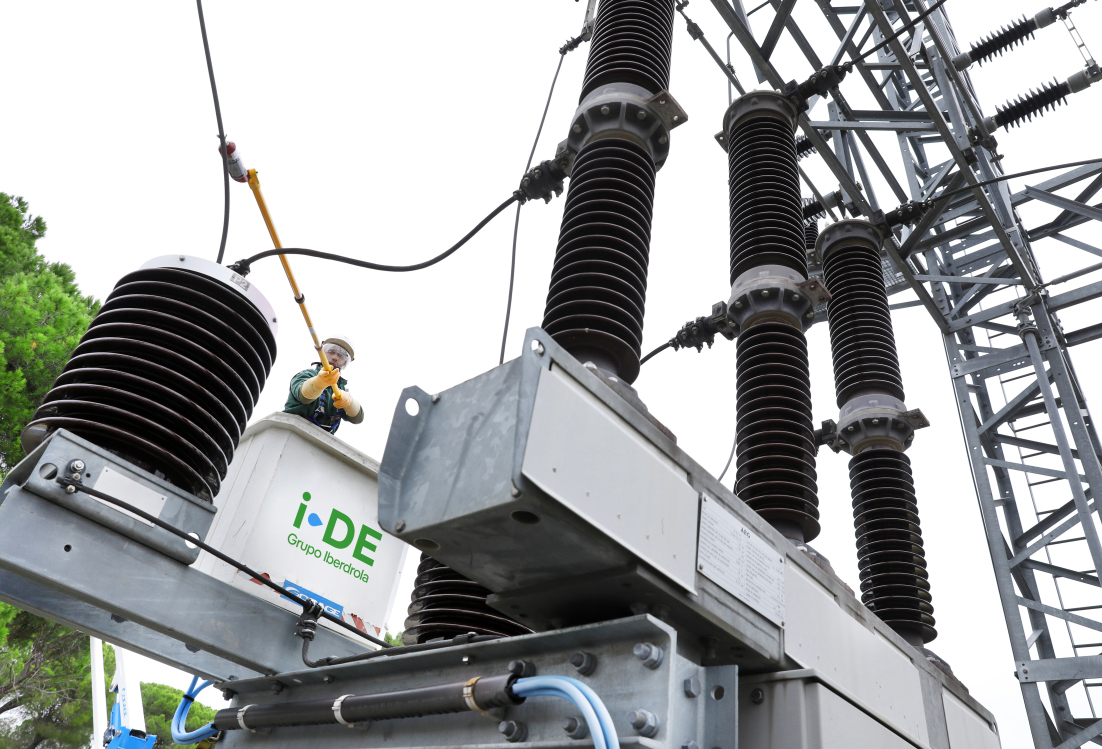
Safety around electrical substations is vital to protect both the infrastructure and the people interacting with it. Maintaining measures, from proper grounding to monitoring and maintenance systems, helps prevent incidents and ensure the continuity of electrical supply.
At i-DE, as part of the Iberdrola Group, we apply advanced protocols and supervision systems that integrate electrical risk prevention at every stage, ensuring a safe and efficient network operation.
You may also like
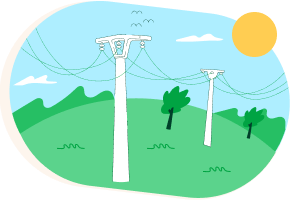
18 FEB 2025
How to know which is my electricity distributor
Depending on the geographical area where your supply point is located, you will be a customer of one distributor or another.
This occurs because electricity distribution is a regulated business. In other words, the customer is not free to choose the distribution company, unlike their relationship with the retailer. The retailers are the responsible for selling this energy, and the customer can freely choose with whom to contract it.
Electricity distributors play a crucial role: they are responsible for supplying electricity. In other words, they ensure that electricity reaches our homes, businesses, and industries in the best conditions.
Learn More

07 MAY 2025
Substation: What it is, how it works, and main characteristics
Currently, electrical grids are the backbone of the energy system as they connect decentralized energy generation with the end consumer. In this context, distribution substations allow for the transformation, regulation, and distribution of energy safely and efficiently. In this article, we explain what an electrical substation is, how it works, and its main components.
Learn More
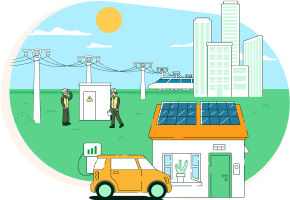
25 OCT 2024
Differences between electricity retailer and distributor
Es muy común que, al hablar de distribuidoras y comercializadoras de energía eléctrica, no sepamos diferenciarlas o no conozcamos qué papel juega cada una. Por eso, te desvelaremos cuáles son sus funciones, sus diferencias, qué gestiones realiza cada una de ellas y a quién acudir en caso de avería.
Learn More
